Higher classification Handroanthus | Tribe Tecomeae Scientific name Handroanthus heptaphyllus Rank Species | |
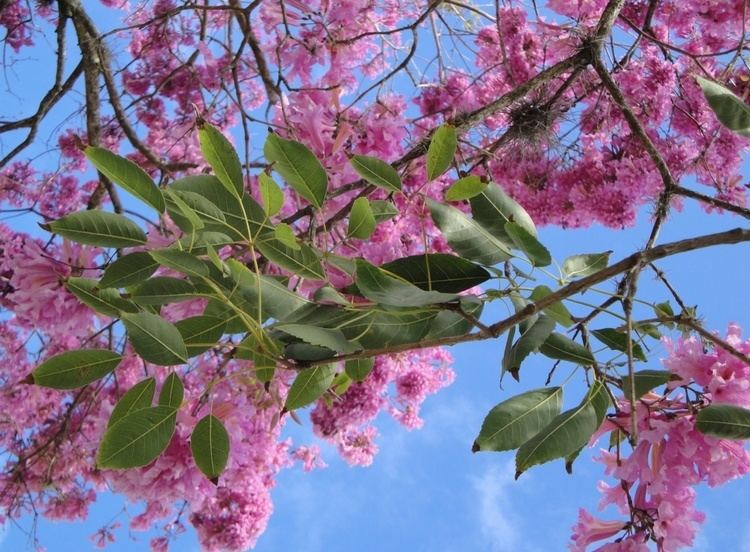 | ||
Similar Pink trumpet tree, Handroanthus albus, Tabebuia roseo‑alba, Trumpet trees, Handroanthus | ||
Handroanthus heptaphyllus, is a Bignoniaceae tree native to South America. It is also known as Black Lapacho (lapacho negro), or tajy.
Contents
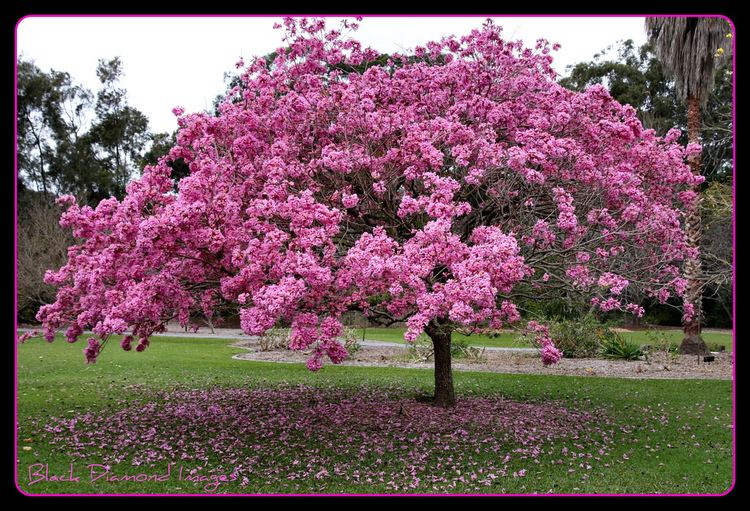
It grows in the high forest watershed of the Paraná River, Paraguay River and Uruguay River. It has a limited distribution, almost exclusively inhabiting the low lands with wet and deep soils, where it forms part of the upper stratum. It is very rare in other microenvironments. It is the national tree of Paraguay, declared as such in the Nº4631 Act of May 10, 2012, as proposed by the School of Chemical Sciences at the National University of Asunción.
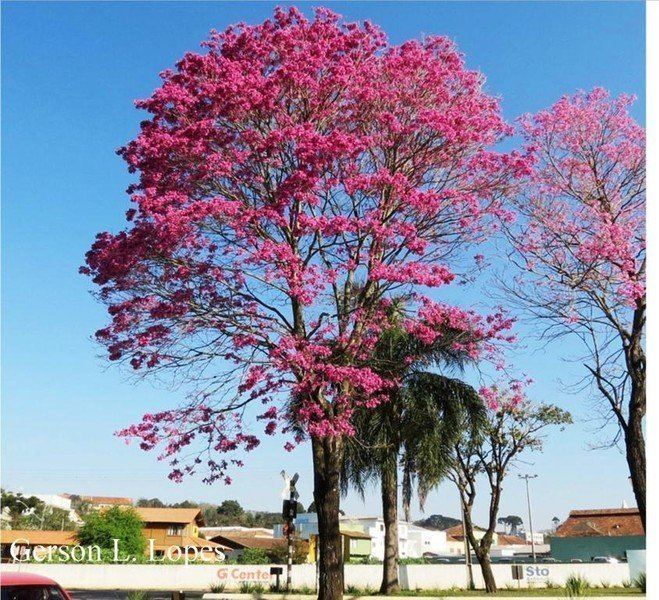
Description
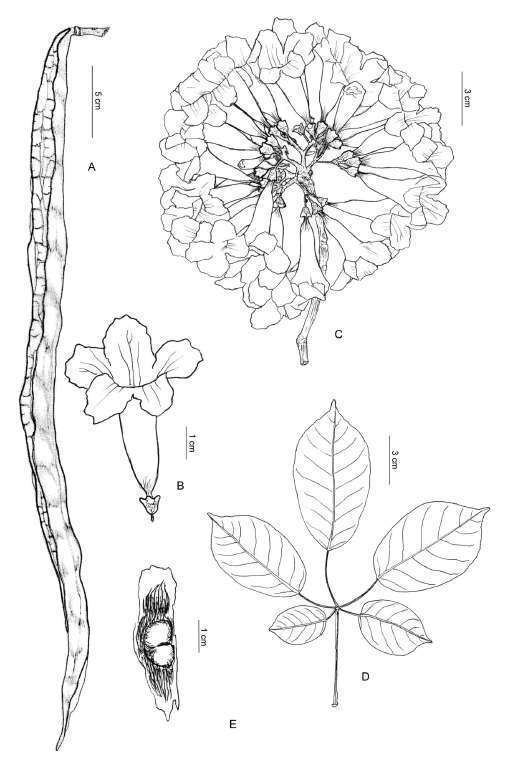
It is a very tall tree, growing up to 40 m in height. The leaves are 10-15 cm long, trifoliate with elliptical serrated leaflets. The trunk is long, cylindrical, and stately. The bark is brown-gray, very rough, and with deep cracks in adult specimens. The crown is hemispherical with open fan branches. There is semi-persistent foliage. Its leaves are opposite, palmate, and have 5-7 leaflets. The tree is semi-deciduous with purple/pink tubular flowers appearing before the leaves. The flowers can vary in color from bright pink to pale pink or even white. The fruit is a linear pod up to 30-40 cm long and 1-1.5 cm wide, brown when ripe, opening longitudinally into two leaflets and dropping some 150 winged seeds.
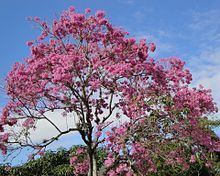
Flowering begins in the first half of September; approximately 30 days after the first leaves appear, with the seed pods ripening in January-February.
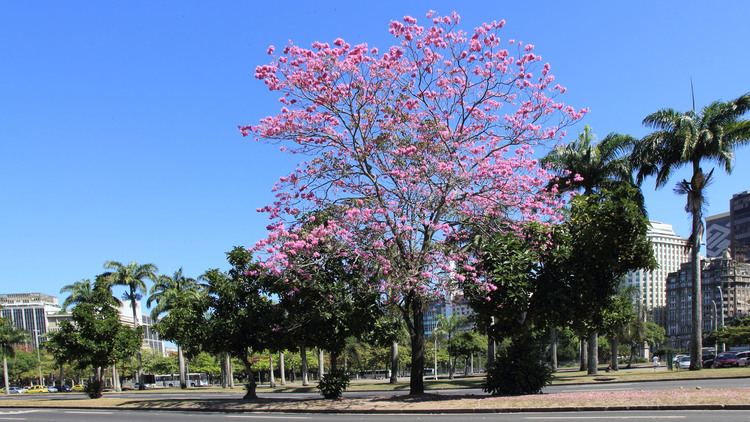
The tree is very decorative, and is frequently used in parks, squares and public woodland. It withstands high winds and has a strong and deep root system.
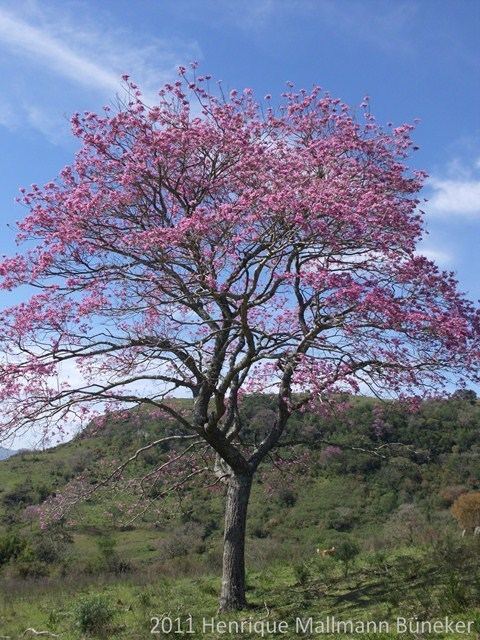
The tree is very demanding in terms of light and humidity, and is susceptible to frost when young. It prefers light, deep, moist soil.
Properties
The wood is hard and heavy, with well-marked differences between sapwood and heartwood timber. The heartwood turns a dark color with oxidation. The wood is very weatherproof. It is used in the construction of boats, docks, truck beds, beams, crosspieces, stairs, floors, as well as woodturning. Sawing produces a pale yellow sawdust containing lapachol. The wood has tannins and dyes.
The sawdust or wood chips, bark and leaves can be used for medicinal purposes.
The tree is easily propagated by seeds. The number of seeds/kg is 32,000 to 35,000. Planting should be done as quickly as possible, as the seeds will only germinate during the first 12-15 days. Vegetative propagation through the rootstock is also possible. In this species, certain trees produce white flowers. These "white lapachos" are often reproduced by grafting.
